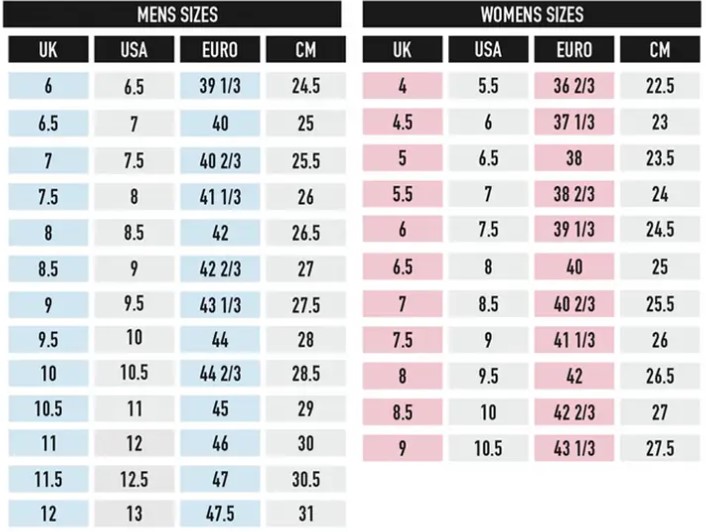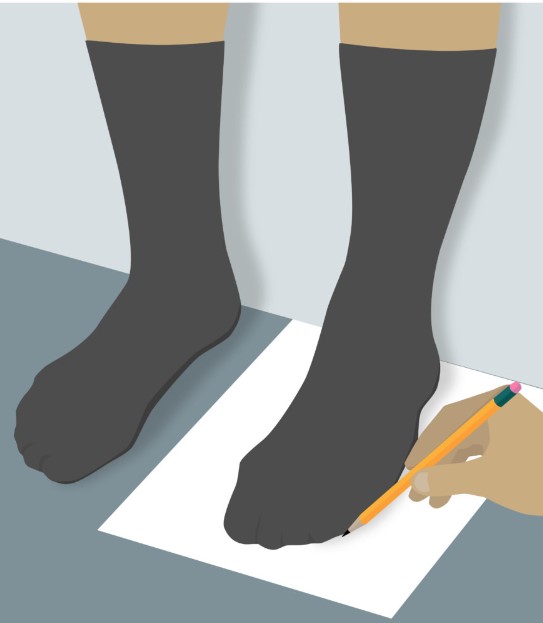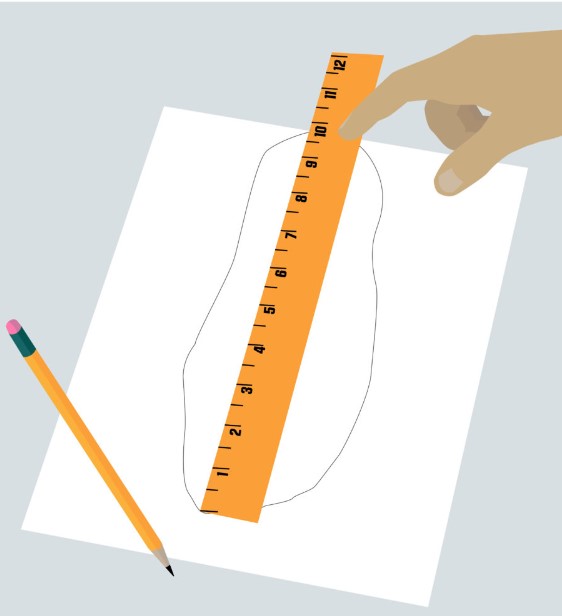Accurate shoe sizing is crucial for ensuring comfort, preventing foot issues, and making informed purchasing decisions. Ill-fitting shoes can lead to discomfort, pain, and even long-term foot problems. Therefore, understanding how to measure shoe size in the UK is essential for everyone, from casual shoppers to avid shoe enthusiasts.
The process of measuring shoe size involves more than just length; factors like width and foot shape also play a significant role. This guide will take you through the steps of accurately measuring your shoe size in the UK, considering various methods and tips to enhance precision.
Does the Type of Shoe Matter?
The type of shoe can definitely matter, especially for your feet and ankles. Here’s a breakdown:
- Support and Activity: Different activities require different shoe designs. For instance, running shoes provide more cushioning and impact absorption than sandals.
- Fit: A well-fitting shoe is crucial for overall comfort and foot health. An ill-fitting shoe can cause blisters, pain, and even posture problems.
- Foot Type: People with flat feet or high arches may benefit from specific shoe features like arch support to maintain proper alignment.
However, some research suggests that focusing on fit and comfort might be more important than specific shoe features for preventing injuries in healthy individuals.
Ultimately, the best shoe depends on your individual needs and activities. Here are some tips for choosing the right shoe:
- Consider your activity level and choose shoes designed for that purpose (running, walking, hiking, etc.)
- Get properly fitted by a professional at a shoe store
- Pay attention to comfort and fit over brand or price
Remember, your feet are important! Taking care of them with the right footwear can help prevent pain and keep you moving.
Understanding UK Shoe Sizing
Understanding UK shoe sizing is essential for anyone looking to purchase footwear in the United Kingdom. The UK shoe sizing system is distinct from other systems around the world, and having a grasp of its nuances ensures that you can make informed decisions when selecting and buying shoes. Here’s a more detailed exploration of this topic.
Size Chart
Shoe sizes come in various numbering systems depending on the region and gender. There are conversion charts available online to help you navigate between US, UK, and European sizes for men, women, and children
Let’s start this with an example. I got my foot measurements using the method above. With a piece of paper, a pencil, and a tape measure, I wrote down the length of my foot as well as my foot width and found that it came to just over 28cm. I found that my other foot was slightly bigger measuring at 28.5cm, so using the shoe size conversion chart I figured out that I should be getting a 10UK sneaker which is 100% accurate to the shoe size that I would usually get.

Image source: thesolesupplier
Explanation of UK Shoe Size System
The UK shoe sizing system is based on the length of the foot in inches. Each size increment represents a 1/3 inch increase in length. Unlike some other sizing systems, the UK system does not typically account for foot width in the numerical sizing but offers a separate indication for width (e.g., ‘E’ for narrow, ‘F’ for standard, ‘G’ for wide).
- Numeric Sizing: The numerical part of the size corresponds to the length of the foot, measured from the heel to the tip of the longest toe.
- Alphabetic Sizing for Width: The alphabetic part of the size indicates the width of the foot. Different letters are used to denote narrow, standard, and wide widths.
Variations in Sizing Across Brands
While the UK shoe sizing system provides a standard guideline, it’s crucial to recognize that variations exist among different shoe brands. Brands may adopt their own standards or interpretations of the UK system, resulting in subtle differences in sizing. These variations can impact the fit of shoes, and consumers should be aware of these distinctions when shopping for different brands.
- Brand-Specific Sizing Guides: Many shoe brands provide sizing guides that customers can refer to for accurate measurements. These guides often include information about the brand’s sizing conventions and any specific recommendations for obtaining the best fit.
- Customer Reviews and Feedback: Reading customer reviews can provide valuable insights into how specific brands size their shoes. Real-world experiences with other consumers can guide potential buyers in choosing the right size for a particular brand.
- Trying Shoes In-Store: Whenever possible, trying on shoes in-store allows consumers to experience the fit firsthand and better understand how a specific brand’s sizing aligns with their foot shape and size.
Considerations for a Proper Fit
Achieving a proper fit involves more than just matching the numerical size. Consider the following factors for a comfortable and supportive fit:
Length: Ensure that the length of the shoe provides enough space for the toes without being excessively long.

Image source: dickssportinggoods
Width: Take into account the width of the shoe, especially if you have a wider or narrower foot. This is denoted by letters such as ‘E,’ ‘F,’ and ‘G.’

Image source: dickssportinggoods
Toe Box Space: The toe box should offer sufficient space to prevent discomfort or pressure on the toes.
Arch Support: Consider the arch support provided by the shoe, especially if you have high or low arches. Different shoe styles cater to various arch types.

Image source: dickssportinggoods
Tips for Navigating UK Shoe Sizing
- Measure Both Feet: Feet can vary in size, so measure both feet and use the larger measurement when determining your shoe size.
- Consider the Use of the Shoes: Different types of shoes (athletic, formal, casual) may have varying fit requirements, so be mindful of the intended use.
- Account for Sock Thickness: If you plan to wear specific types of socks with the shoes, measure your feet with those socks on to ensure a proper fit.
- Be Aware of Foot Shape: Individuals have different foot shapes, and some may have specific considerations such as bunions or wide metatarsals. Take these into account when selecting shoes.
Understanding UK shoe sizing involves a combination of knowledge about the system itself, awareness of brand-specific variations, and consideration of individual foot characteristics. By incorporating these insights into your shoe-shopping experience, you enhance the likelihood of finding footwear that not only fits well but also promotes overall foot health and comfort.
Conclusion:
Determining your shoe size in the UK is essential for ensuring comfort and fit. By following the simple steps outlined in this guide, including measuring your foot length and consulting size charts, you can confidently select the right shoe size for your needs.
Remember, accurate measurements lead to better-fitting shoes, reducing discomfort and potential foot problems in the future. So, measure carefully, refer to reliable size guides, and step out in style with the perfect fit every time.
Frequently Asked Questions (FAQs)
To measure your UK shoe size at home, start by placing your foot on a piece of paper and tracing its outline. Then, measure the longest distance from your heel to your longest toe in centimeters. Use a size conversion chart to find your UK shoe size based on this measurement.
Size 7 in UK shoes typically corresponds to a foot length of approximately 25.5 centimeters for women and 26.5 centimeters for men. However, it’s always best to refer to the specific brand’s size chart for the most accurate fit.
The price of shoes in a UK size 7 can vary depending on the brand, style, and material. On average, you can expect to pay anywhere from £20 to £150 or more for a pair of shoes in this size.
A foot length of 23 centimeters generally translates to a UK shoe size of around 4.5 for women and 5.5 for men. Again, it’s recommended to consult a size conversion chart or the brand’s specific sizing information for the most precise fit.
